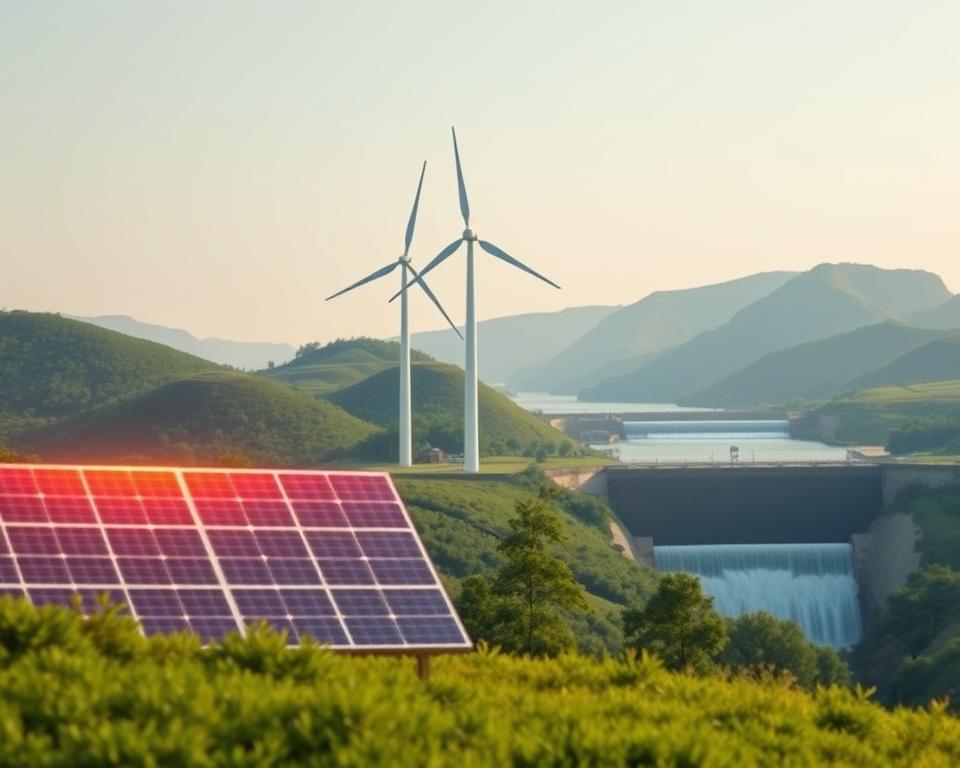Oznámení
Why does what you buy and how you live matter in the U.S. today? The 2030 Agenda and the UN’s 17 SDGs connect everyday choices to global progress. This short intro shows how clear steps at home, work, and the store link to people and the environment.
You get a clear, step-by-step roadmap that offers quick wins you can start today and bigger moves to plan for months ahead. We draw on United Nations SDG reporting and National Geographic’s practical sourcing and packaging tips.
Expect practical actions: cut food waste with composting, choose ENERGY STAR appliances, pick WaterSense fixtures, and favor clean manufacturing and circular packaging. These choices show how small actions add up to sustainable development on a larger scale.
By the end, you’ll have the information and resources to ask smarter questions of brands and to turn intent into real progress—one smart change at a time.
Introduction: why a Sustainability guide matters in the United States today
The united nations framework gives a clear context for how your daily choices matter in the U.S. today.
Oznámení
From global goals to everyday choices
You live in a moment when climate and resource issues intersect with routine decisions—energy bills, what you buy, food waste, and how you commute. The UN’s 17 SDGs, adopted in 2015, shape priorities for energy access, cities, responsible production, and life on land and below water.
Annual SDG progress reports show where momentum builds each year and where more work is needed. National Geographic recommends checking partners for material sourcing, clean manufacturing, and transport impacts.
Oznámení
- We translate global goals into simple checks you can use at home and at work.
- Practical foodtech moves—cutting household food waste and smarter packaging—link pantry choices to broader sustainable development aims.
- You’ll find concise information to help consumers pick credible labels and make steady change.
Quick takeaway: This short section connects global goals to local action so your next steps feel practical and doable.
Aligning with the UN Sustainable Development Goals for real-world impact
The 2030 Agenda turns global ambition into clear priorities you can act on at home and at work. The United Nations adopted the 2030 Agenda in 2015, and all member countries use the 17 SDGs to track action.
The framework links daily choices to measurable targets. Annual SDG Progress Reports (2016–2025) show where countries advance and where more effort is needed. These reports stress faster shifts in clean energy, low-carbon transport, and responsible consumption to meet 2030 targets.
The 2030 Agenda and the 17 SDGs that shape action
Think of the SDGs as a map. For households and businesses, you can map specific measures to specific goals: efficient energy to SDG7, smarter cities to SDG11, buy-less principles to SDG12, and emission cuts to SDG13.
What recent UN SDG Progress Reports signal for energy, climate, and consumption
Recent report findings highlight scaling clean power and shifting transport to lower-carbon options. Use the SDG icons and language at work to set procurement priorities and redesign packaging.
- Day-to-day: Treat SDG12 as your operating rule—buy less, choose better, design for reuse.
- Businesses: Request supplier disclosures and prefer certified materials to support implementation.
- Community: Connect projects like composting and repair events to SDG11 and SDG12 for tangible progress.
“Use simple SDG references to make your impact easy to understand.”
Following the UN guidelines behind SDG indicators helps you track progress consistently. Apply these goal-based steps and you’ll turn small choices into measurable development progress.
Simple actions you can take today for energy, water, and waste
You can take simple steps today that lower energy use, save water, and reduce trash. These are practical actions you can start this week with little cost and clear results.

Energy at home: efficient appliances, clean power options, and smarter use
Switch to ENERGY STAR appliances and LEDs. Set a smart thermostat to trim use without losing comfort.
Ask your utility about community solar or other renewable options. Consider heat pumps and induction cooking as efficient home choices.
Consumption and waste: buy less, choose better, reuse more
Choose durable products with repair options and minimal packaging. Prioritize bulk, refill stations, and items your local programs actually recycle.
Set up a small home sorting station and add food scrap collection or backyard composting to cut trash and feed soil.
Water-wise living: fixtures, leaks, landscapes, and local resources
Fix leaks promptly and install EPA WaterSense faucets, showerheads, and toilets to lower water use. Adjust irrigation schedules and pick drought-tolerant landscaping.
Use municipal rebate programs for fixture upgrades and check local resources for free or low-cost water audits.
Low-carbon travel habits: plan, combine trips, and choose efficient modes
Combine errands, carpool, bike, or use transit when possible. Bundle online orders, choose slower shipping, or pick up parcels on existing routes to cut delivery emissions.
- Track a few simple metrics—kWh, gallons, and pounds of trash—to see which actions move the needle.
- Review progress seasonally and adjust purchases, product choices, and travel options as you learn.
“Small, repeatable actions add up—measure a little and you’ll stay motivated.”
Sustainability guide for businesses: from sourcing to clean manufacturing
Your business can cut risk and create value by aligning sourcing, manufacturing, and packaging with clear, verifiable standards. Start with simple policies that require certified fiber and recycled inputs for your products and services. Keep goals practical and measurable so progress shows up in procurement decisions and customer-facing claims.
Responsible materials and supply chains
Write supplier standards that require FSC, PEFC, SFI, or ATFS certification for paper and legal, ethical sourcing across products. Map your supply chain and flag risks tied to forests, land use, water, and human rights.
Tip: Ask suppliers for chain-of-custody documentation and recycled content percentages before you approve orders.
Clean manufacturing, packaging, and transport
Specify pollution prevention, process efficiency, and verified waste handling in contracts for manufacturing and manufacturing services. Redesign packaging to cut material, boost recycled content, and remove hard-to-recycle components.
- Consolidate shipments, plan multi-stop routes, and source locally when feasible.
- Pilot reuse systems and test circular models like repair, refurbishment, and take-back.
- For food and beverage products, prioritize recyclable packaging, efficient cold-chain logistics, and local food-waste partnerships.
Governance and reporting
Adopt clear policies, set targets, and assign owners so sustainability moves from intention to process. Report simply and clearly using credible metrics and close the “do-say” gap by publishing progress and lessons learned.
“Decarbonization and circular approaches can create new value while reducing costs.”
Carbon, energy, and water basics for measurable change
Small, tracked changes to how you use power and water can add up to real carbon reductions. Start by measuring what you currently consume so you know where to focus. Annual SDG progress reports and practical advice from trusted sources help set realistic goals.
Understanding Scope 1, 2, and 3 emissions and practical reduction levers
Scope 1 covers the fuels you burn directly. For homes, this means natural gas for heat; for businesses, on-site boilers and fleet vehicles.
Scope 2 is purchased electricity. Buy cleaner electricity or switch to community solar to cut this slice of emissions.
Scope 3 covers the broader value chain: materials, transport, and product use. Engage suppliers on packaging and logistics to lower these upstream and downstream impacts.
- Cut carbon first with efficiency: upgrade lighting and HVAC, maintain equipment, and optimize schedules.
- Electrify strategically—heat pumps, induction stoves, and EVs reduce fuel use when paired with clean power.
- Reduce water with leak detection and WaterSense fixtures; efficient hot water use lowers both water and energy use.
Renewables, efficiency, and resilience: building toward climate goals
Match electrification with renewables and add resilience where possible. Consider storage, demand response, or green tariffs to protect operations and trim emissions.
Set near-term goals informed by a credible report baseline. Track simple metrics—kWh, therms, gallons, and emissions factors—and automate data capture when possible.
“Measure, act, and review regularly—small cycles of progress make big development and climate change goals achievable.”
Reinforce gains with scheduled maintenance and share learnings across teams so improvements spread quickly. Make a short review plan and update milestones as you see progress.
Track your actions, review progress, and iterate for long-term growth
Tracking what you do turns intention into repeatable activities and measurable value. Pick a few simple numbers to watch and make a short report each quarter. That habit keeps momentum and makes year-over-year progress clear.
Toolkits and resources help you keep reporting consistent. Use UN SDG Progress Reports and National Geographic checklists to standardize methods. Choose one dashboard that shows energy, water, waste, and a few core activities.
Practical steps you can use
- Log actions with dates, receipts, and short notes so implementation gets easier next year.
- Schedule a quarterly check-in and a full annual review to celebrate wins and reset targets.
- Use credible resources to align methods and keep implementation consistent across teams.
- Share short summaries to build trust and show commitment to stakeholders.
Keep improving: retire what doesn’t work, scale what does, and repeat the cycle. Regular review and clear reports make this manageable, not perfect. Stay committed and you’ll see real progress over time.
“Use simple dashboards and steady reviews to turn small activities into lasting value.”
Závěr
Start with one small action today—pick a single task you can do this week and one you’ll schedule for the quarter. Small, repeated activities build durable growth for your household or business.
Use clear metrics and a short report to track progress. Align that goal with UN 17 SDGs and use trusted sources like National Geographic and industry reporting to check claims from suppliers and manufacturing services.
Protect natural resources by cutting waste, saving water, and designing products for repair or reuse. Treat climate and carbon as practical constraints: electrify where it fits, then optimize use.
Keep learning and review your work annually. Share what you try, document suppliers, and show measurable value so others can follow your example.



